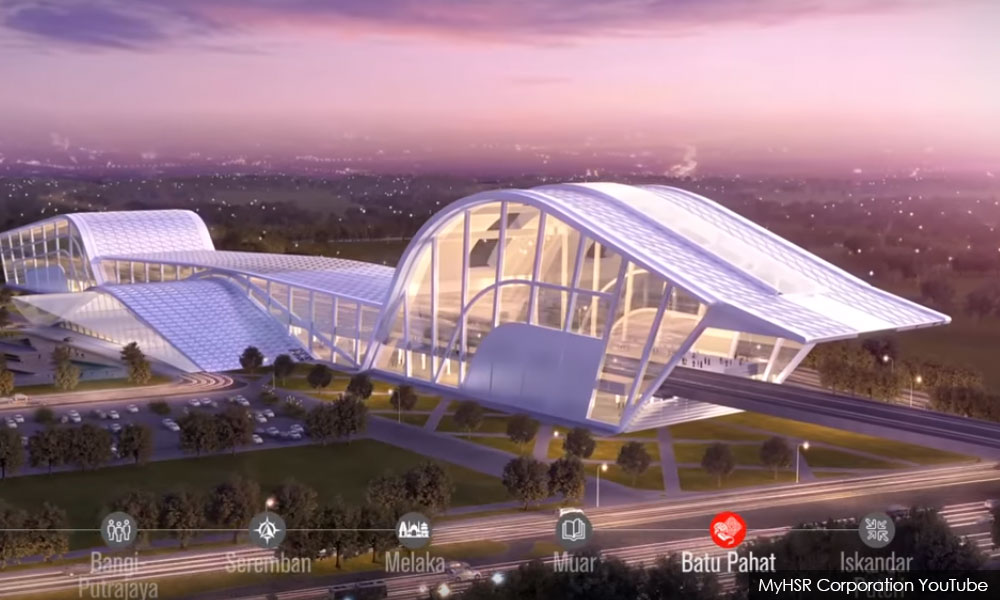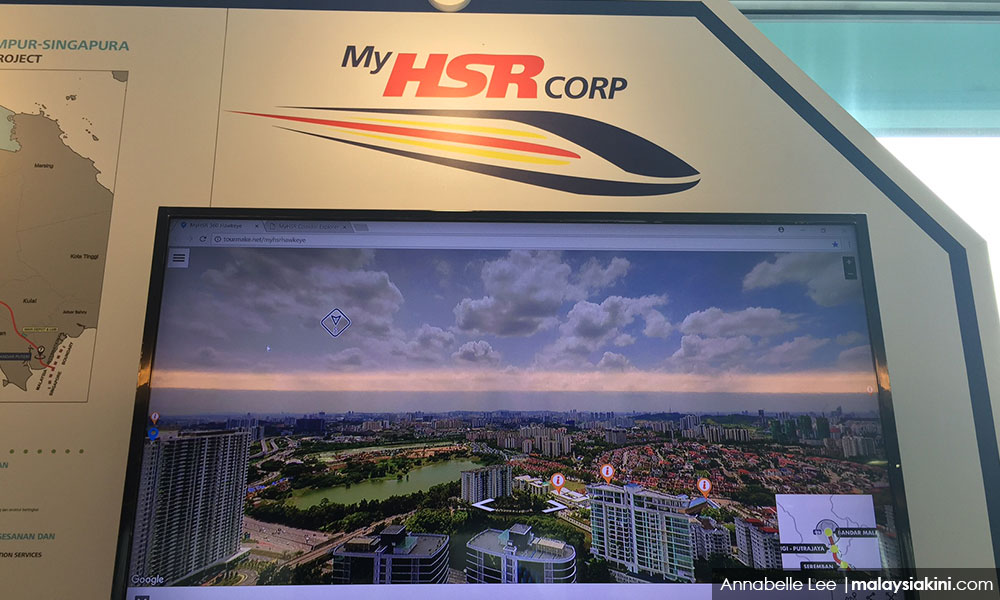
Two segments of the public in Malaysia benefit immediately from the implementation of a High-Speed Rail (HSR) project – first the builders and suppliers of the system and, second, the users who can afford the ticket prices once the project is commissioned.
However, its benefit to the wider public and the national economy is vague at best, and a significant financial loss may be experienced, based on other HSR projects evaluated.
Financial failures have been the case for most HSR projects since these started in Japan (1964) and Italy (1970) and it is difficult to see why our HSR system would perform otherwise, especially since the underlying passenger volume required to make it viable will not be present for the next 70 years.
Detailed studies have shown that only under exceptional circumstances, with the best in class construction and operating cost, can any HSR project expect to be financially viable with a minimum annual load of six million passengers in the first year.
For a more typical project, with the usual cost over-runs experienced in every HSR project completed elsewhere, it is necessary to have an annual load of nine million passengers in its first year.
Based on the currently available data, only the Paris-Lyon route and the Tokaido route in Japan have exceeded this passenger volume. A few of the Chinese HSR routes also meet this condition.
Consider that passenger load requirement against the current reality of the annual passenger numbers for the Kuala Lumpur-Singapore air route, which at four million, is already the largest volume of passengers in intercity air travel worldwide.
Note also that for the past five years, this route has seen only a two percent average annual passenger volume growth rate.

Even if at best the HSR garners a 60 percent market share of this volume, the expected initial annual load is only 2.4 million passengers. At this growth rate, passenger volumes and market share, it will take nearly 70 years from now for the proposed HSR to become financially viable.
The reference to air travel passengers is relevant, as even at the already cost-effective ticket prices of China’s HSR, Malaysians can expect to pay between RM100 to RM140 for a one-way ticket from Kuala Lumpur to Singapore.
At that price point, the HSR is competing with the low-cost airline services between these cities. Thus the target market segment is mainly air passengers and not current road or rail travellers.
Over-rated justifications
New HSR system proposals invariably specify socioeconomic benefits, mostly intangible but nonetheless enumerated in viability studies to form the basis for its justification.
Studies by the European Union have found such justifications to be consistently over-rated, and where detailed analyses were completed, negative Net Present Values were seen – for example, one analysis indicated that the Madrid-Seville route lost RM25 billion in total economic value (not just financial) between 1987 and 2017.
Proponents may disagree, referring to studies completed by international firms, but reality must trump aspirational ambitions for multibillion investments.
HSR undoubtedly has environmental benefits. For every seat-kilometre, an HSR system consumes one-third the energy an aeroplane would. Therefore, it is a low-carbon, low-emission mode of transport.
But this alone is not enough. There is also the argument of technology transfer, but let us consider the fact that we are not even building standard diesel and electric rolling stocks locally at present. Hence, aspiring to leapfrog and gain HSR technology is a misdirected ambition.

In summary, a new HSR system is hardly ever financially viable, especially not between Kuala Lumpur and Singapore as the minimum required passenger load is simply non-existent for the next 70 years.
Infrastructure investments have a “technology ladder” and “viability ladder”. The proposed HSR is simply a few rungs too high for our current needs.
We already have the KTM Electric Train Service (ETS) that runs at 140 kilometres per hour up to Gemas. Extend that all the way into Singapore’s Woodlands CIQ and we can run a non-stop service between Kuala Lumpur and Singapore, covering the 350 km distance in about three hours from KL Sentral, which already can accommodate the ETS.
SREEDHARA NAIDU is a London-based consultant with experience in evaluating capital investment projects for the private and public sector, having reviewed hundreds of projects, totalling RM100 billion over a 20-year period. Originally trained as an engineer, he has also completed post-graduate degrees in Business Administration (MBA), Finance (MSc) and Change Management (MSc) from University of Bath, London Business School, University of Oxford and HEC Paris respectively. He currently advises businesses and government agencies on finance, performance transformation, strategy and scenarios. Mr Naidu operates his UK firm, Provectus Advisory Ltd. His full profile can be reviewed here. -Mkini


No comments:
Post a Comment
Note: Only a member of this blog may post a comment.